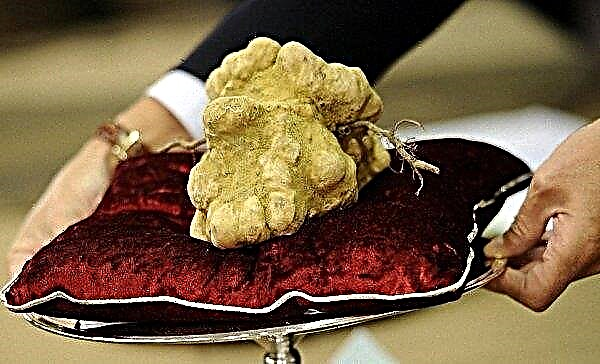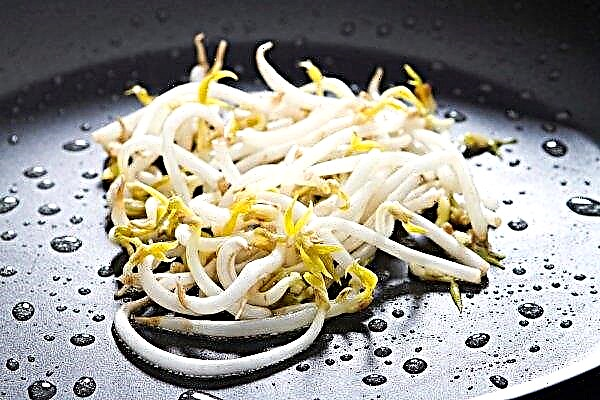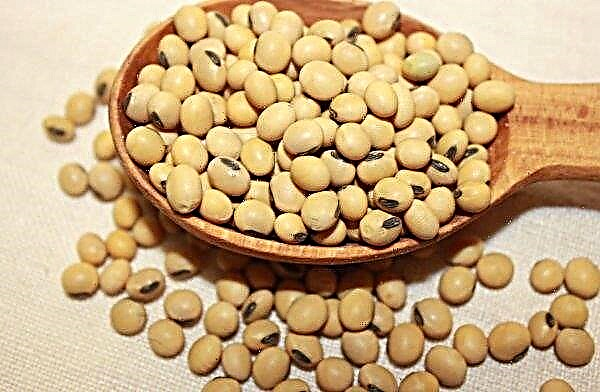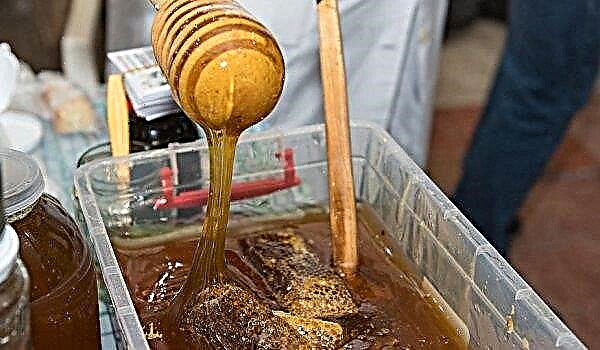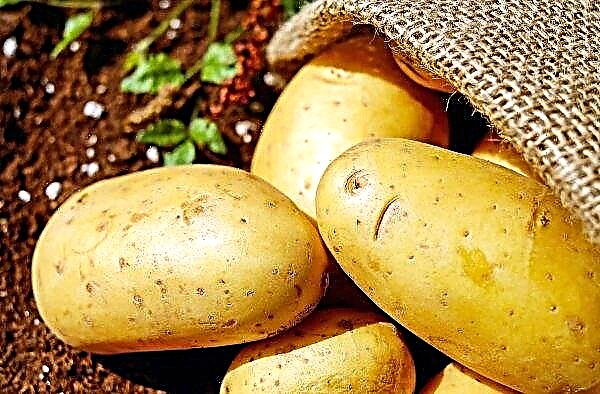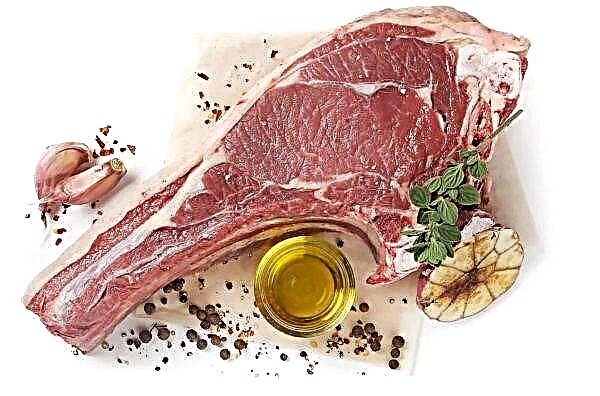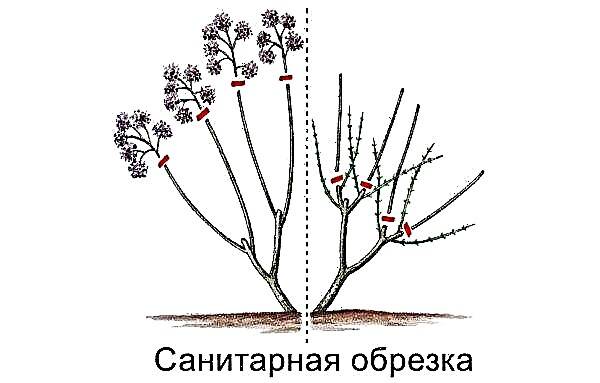Daffodils are tender perennials that delight your eyes in the spring. It may seem that they are all the same, because the color palette is not so large. Most often they are white and yellow with shades of pink, peach, orange and red. Gardeners have learned to use these plants in a variety of floral arrangements. In particular, the variety of terry daffodils Replit always looks interesting on flowerbeds, lawns, borders, in mixborders, and is also suitable for cutting.
Botanical grade description
Terry daffodil Replite (Replete) refers to the bulbous plant. This is a representative of the Amaryllis family. Under natural conditions, daffodils grow in the southern part of the European continent, in Asia and the Mediterranean countries.
The plant reaches a height of 35–40 cm. On the peduncle there can be one or several large flowers, the diameter of which is 10–15 cm. Daffodils have a delicate aroma. Ivory petals of terry perianth have a rounded shape. In the middle, they alternate with the petals of a terry apricot-pink crown.
The leaves of the plant resemble a ribbon of various widths. As a rule, there are no more than four of them on one bush. Leaf blades form in the spring before inflorescences appear. Daffodils are planted with bulbs, the diameter of which is 30–35 mm.
Favorable temperature conditions for plant growth and development - +14 ... + 18 ° С. The flowering period is April-May. In one place it can grow up to 5 years.
Important! When buying bulbs, you need to pay attention to their density (soft or cracked do not fit), the purity and integrity of the bottom, the smoothness and density of the neck.
A significant disadvantage of the plant is the drooping of the peduncles when wet. After rain or heavy watering, heavy, saturated with moisture flowers may not remain on the peduncles, as they bend to the ground and often break.

The use of flower in landscape design
In any corner of the site this unpretentious plant will feel great. Daffodils are able to retain moisture and nutrients, so they are planted in groups on the heights of the garden. Gardeners also suggest using daffodils to suppress grass. They are planted in a circle near the line of the pericarp circle of a fruit or walnut tree, since these flowers do not allow grass plants to creep under the tree, and therefore do not allow them to take water and nutrients from the soil.
Landscape designers use the Replit variety in the most daring flower arrangements, combining in flower beds with:
- bright hyacinths;
- crocuses of violet color;
- primulas.

Often a flowerbed of any configuration is broken in the most prominent places. You can even plant only one Replit variety on it, fringing it with any floral border. Later, when flowering ceases, flyers often plant in the place of daffodils.
This flower is suitable for landscape design in the style of a natural garden. Terry daffodil can act as a contour of the lawn. Even in front of the windows of a summer cottage or a rural house, the variety in question will amaze the views of the household.
Daffodils can benefit the garden of permacultures in many ways. They provide nectar for early season pollinators, which in turn can improve fruit tree pollination. This is one of the reasons why this flower culture is often planted in the fruit tree guild.
Flower planting
Terry daffodil variety Replit can be planted both in the open sun and partial shade. The plant is not picky about the soil composition, so sandy and clay soils will not prevent it from developing safely and blooming together. The only thing this variety is demanding on is good drainage and soil, which should be rich in nutrients with a slightly acidic or neutral reaction.

Too acidic soil can be improved by adding ash. Since daffodils are too demanding on moisture, it is best to stay on loamy soils that can hold moisture well. It should be avoided when planting wet soil plants, where in the off-season the water stagnates for a long time.
Important! Each gardener should have a test indicator that allows you to check the acidity of the soil.
The timing
The best time for planting a terry daffodil daffodil is the last week of September and all of October.in steady warm and dry weather. So the bulbs have time to take root before the onset of frost.
Instruction manual
A month before planting, you need to dig the earth. Depth of laying depends on the size of the bulb and soil composition. Usually it is equal to a height 3 times the size of the bulb itself. If the soil is light, the planting depth can be increased by 4 cm by adding 5–9 kg of humus per 1 m².
 For heavy soils, it is advisable to add 20–25 kg of sand per 1 m² and reduce the amount of laying by the same amount. The distance between the bulbs should be at least 15 cm
For heavy soils, it is advisable to add 20–25 kg of sand per 1 m² and reduce the amount of laying by the same amount. The distance between the bulbs should be at least 15 cm
Landing Algorithm:
- Make holes.
- At the bottom, add complex granular fertilizer for bulbous plants Agrecol or "Agroperlite" in the proportions indicated on the label.
- Pour a layer of sand (3 cm) and drain the soil with pebbles, chipped bricks or gravel (2 cm).
- Set the bulbs with the root end down, with the pointed end up, and cover with garden mix.
- Watering the holes is not as plentiful as shrubs or trees are watered when planting, so as not to provoke decay.
- Mulch the soil with dry grass, needles.
Video: When and How to Plant Daffodils
Flower care
Experienced gardeners know that caring for daffodils requires some knowledge and attention, but it is not as difficult as it might seem at first glance.
After the snow melts, remove the mulch layer. During the period of plant growth, weeding, loosening and watering should be carried out. Maintaining soil moisture is very important for the successful formation of kidneys. This period begins in early April, when the soil dries completely from the remnants of snow. If you do not fill in the missing amount of moisture, the daffodils may not bloom, and the resulting kidneys simply dry.
Did you know? In the East, daffodils were compared with the eyes of a beloved girl. In ancient Greece, he was associated with the world of the dead, and in Europe with a wedding ceremony. Italians consider the plant a symbol of love and tenderness.
In spring, if there is no rain, watering should be regular, especially shortly before flowering and during. Too frequent watering in the summer is undesirable, it is done only in dry weather. Fertilizing is also important for terry daffodil daffodils.. Organic fertilizing, such as humus or compost, is applied at the rate of 10 kg per 1 m². Fresh manure cannot be used as fertilizer, since it can provoke the appearance of dangerous pests.

At the very beginning of the growing season, during the growth of leaves, the flowers should be equipped with nitrogen fertilizer (Plantafol) or nitrogen-phosphorus - Ammophos 12-52. These drugs do an excellent job.
Did you know? For more than 200 years, scientists have been working on new varieties of daffodils. Now there are more than 30 thousand. Varieties are bred in England, America, the Netherlands and Northern Ireland.
When the stems begin to appear, you need to do the root dressing of daffodils with potash fertilizer. To do this, mix 1 tbsp. l Kemira preparation with 10 l of water. The most active intake of nutrients is observed at the time of budding. The same drug "Kemira" can be used during this period according to the instructions. Double superphosphate (20 g) and potassium sulfate (30 g) feed daffodils during flowering.

After the plant fades, within 20 days you need to loosen the soil and irrigate. The dried flowers are removed, and the leaves are left to dry completely. At the end of summer, 100 g of nitrophoska per 1 m² is added to the soil.
The popularity of daffodils is explained not only by their tenderness and attractiveness, but also by their unpretentiousness. Even a novice gardener can grow them. Terry daffodil Replit, together with crocuses and tulips, will be the first to decorate the garden with bright and juicy shades. Exquisite spring flower in the flowerbed will delight blooming for several weeks.


